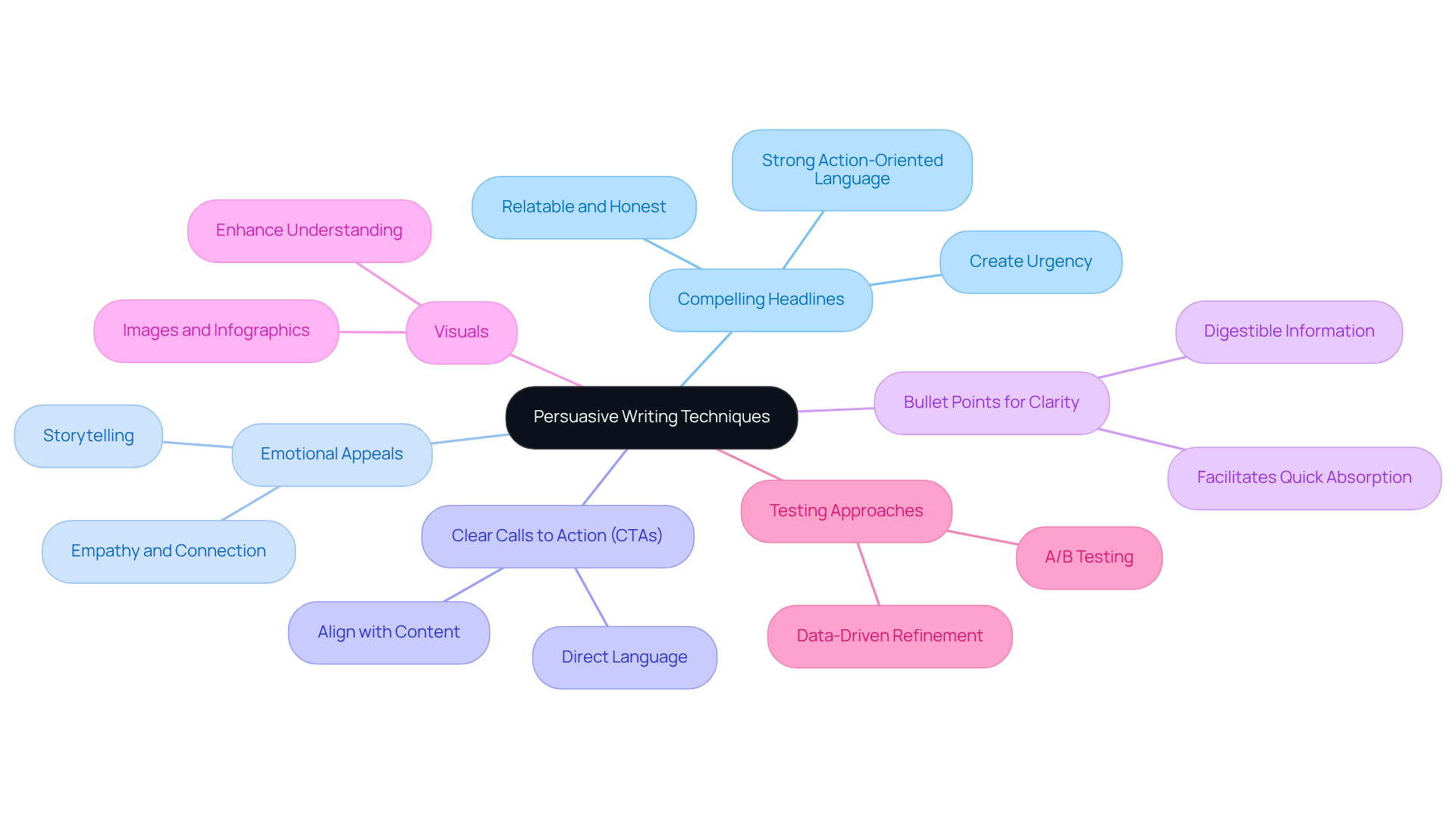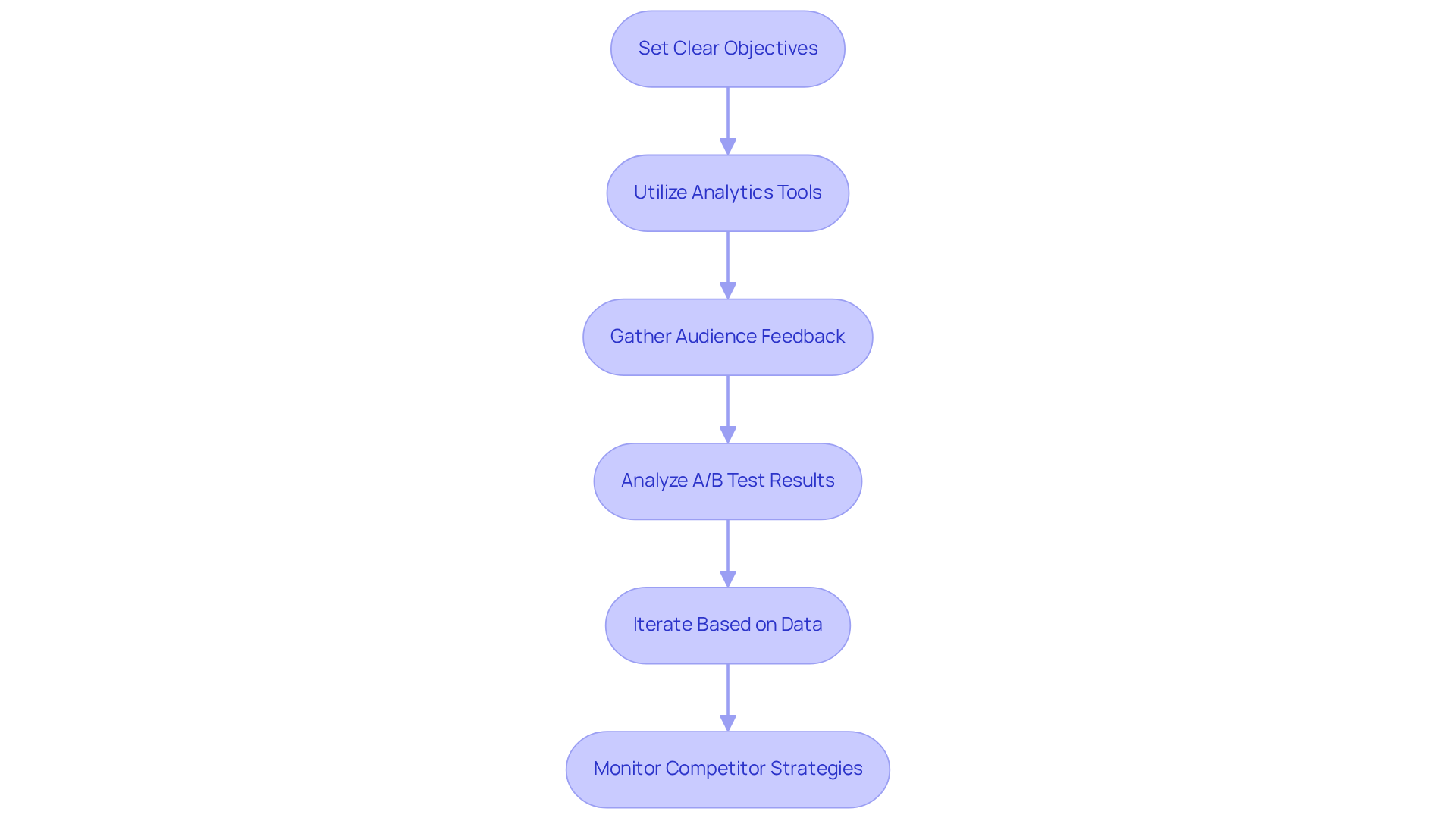
Overview
Mastering written persuasion is essential for significantly boosting direct-to-consumer (DTC) brand sales. By leveraging psychological principles such as reciprocity, scarcity, and social proof, brands can effectively influence consumer behavior. This article outlines various strategies that include:
- Crafting compelling headlines
- Utilizing emotional appeals
Together, these elements create persuasive messages that not only motivate action but also enhance sales performance.
Introduction
Mastering the art of written persuasion is not merely a valuable skill; it is a game-changer for direct-to-consumer (DTC) brands striving to elevate their sales performance. By harnessing psychological principles such as:
- Reciprocity
- Scarcity
- Social proof
brands can craft messages that resonate profoundly with consumers, compelling them to take action. However, the challenge resides in effectively implementing these techniques and continuously optimizing content to align with evolving consumer expectations.
How can brands guarantee that their persuasive writing not only captures attention but also converts interest into sales?
Understand the Principles of Written Persuasion
To master written persuasion, it is essential to understand key that significantly influence consumer behavior. These principles include:
- Reciprocity: This principle suggests that individuals feel a strong obligation to return favors. By offering something of value upfront—such as a free resource, discount, or trial—you can foster goodwill and increase the likelihood of a purchase. Many successful DTC brands have implemented free trials or exclusive discounts to encourage initial engagement, leading to higher conversion rates.
- Scarcity: Creating a sense of urgency can prompt quicker purchasing decisions. Highlighting limited availability with phrases like 'only a few left' or 'limited-time offer' effectively drives consumers to act swiftly, capitalizing on the fear of missing out (FOMO).
- Social Proof: Humans are inherently social creatures, often looking to others for validation. Showcasing testimonials, user reviews, and case studies builds trust and credibility. When potential customers see others benefiting from your product, they are more likely to follow suit, making social proof a powerful tool in marketing.
- Authority: Establishing credibility is crucial. Referencing expertise, credentials, or endorsements from recognized figures in your industry enhances your brand's trustworthiness. Featuring industry experts in your content or marketing materials can significantly influence consumer perceptions and decisions.
- Consistency: Encouraging small commitments can lead to larger ones. For instance, getting users to sign up for a newsletter can pave the way for future purchases. This principle emphasizes that individuals are more likely to follow through on public commitments, making it an effective strategy for nurturing customer relationships.
By leveraging these principles of written persuasion, you can create compelling messages that not only inform but also inspire your audience to take action, ultimately boosting sales for your DTC brand.

Implement Key Persuasive Writing Techniques
To effectively implement persuasive writing techniques, consider the following strategies:
- Craft Compelling Headlines: Your headline is crucial as it forms the first impression. Employ strong, action-oriented language that resonates directly with the reader's needs or desires.
- Utilize : Forge a connection with your audience on an emotional level. Storytelling can evoke feelings that align seamlessly with your brand's message.
- [Incorporate Clear Calls to Action (CTAs)](https://supercopyeditors.com/blog/writing/persuasive-writing-techniques): Every piece of compelling writing should direct the reader towards a specific action. Use clear, direct language such as 'Buy Now' or 'Sign Up Today'.
- Use Bullet Points for Clarity: Deconstruct complex information into digestible bullet points. This approach facilitates the quick absorption of key messages by readers.
- Leverage Visuals: Integrate images, infographics, or videos that complement your text. Visuals can significantly enhance understanding and retention of information.
- Test Different Approaches: Employ A/B testing to identify which messages resonate most effectively with your audience. This data-driven strategy allows you to refine your techniques over time.
By utilizing these methods, you can produce compelling material that demonstrates written persuasion, capturing attention and motivating action.

Evaluate and Optimize Your Persuasive Content
To effectively evaluate and optimize your persuasive content, follow these essential steps:
- Set Clear Objectives: Clearly define what success signifies for your material. Are you aiming for increased sales, higher engagement, or more sign-ups?
- Utilize Analytics Tools: Employ tools like Google Analytics to (KPIs) such as conversion rates, bounce rates, and user engagement metrics. These insights are crucial for understanding how your material performs.
- Gather Audience Feedback: Conduct surveys or request direct input from your audience to gain insights into their perceptions and experiences with your material. This qualitative data can guide your optimization efforts.
- Analyze A/B Test Results: Regularly conduct A/B tests on various components of your material, including headlines, calls to action (CTAs), and layouts. This will help you identify which versions resonate more with your audience and drive better results.
- Iterate Based on Data: Utilize the insights obtained from your assessments to make informed modifications to your material. This may involve refining your messaging, updating visuals, or enhancing your CTAs to improve effectiveness.
- Monitor Competitor Strategies: Keep an eye on successful competitors. Examine their strategies to identify effective tactics that you can adapt for your own brand.
By consistently evaluating and optimizing your content, you can ensure that your written persuasion remains impactful and continues to drive meaningful results.

Conclusion
Mastering written persuasion is not just beneficial; it is essential for driving sales in direct-to-consumer (DTC) brands. By effectively harnessing psychological principles and persuasive writing techniques, brands can engage consumers, foster trust, and inspire decisive action. A deep understanding of core elements such as reciprocity, scarcity, social proof, authority, and consistency forms the bedrock for crafting messages that resonate profoundly with the audience.
Key strategies, including the creation of compelling headlines, leveraging emotional appeals, incorporating clear calls to action, and utilizing impactful visuals, play a pivotal role in enhancing persuasive writing. Regular evaluation and optimization of content through analytics, audience feedback, and A/B testing are crucial to ensuring that messages remain effective and relevant, ultimately leading to improved sales performance.
In today’s competitive market, the ability to communicate effectively and persuade through writing is paramount. Brands that prioritize these techniques will not only capture attention but also build enduring relationships with their customers. Embracing these principles and strategies can significantly elevate a DTC brand's sales potential, making written persuasion an indispensable tool for success.
Frequently Asked Questions
What are the key principles of written persuasion?
The key principles of written persuasion include reciprocity, scarcity, social proof, authority, and consistency.
How does the principle of reciprocity work in written persuasion?
Reciprocity suggests that individuals feel obligated to return favors. Offering something of value upfront, such as a free resource or discount, can foster goodwill and increase the likelihood of a purchase.
What role does scarcity play in influencing consumer behavior?
Scarcity creates a sense of urgency, prompting quicker purchasing decisions. Phrases like 'only a few left' or 'limited-time offer' can drive consumers to act swiftly due to the fear of missing out (FOMO).
Why is social proof important in marketing?
Social proof is important because people often look to others for validation. Showcasing testimonials, user reviews, and case studies builds trust and credibility, making potential customers more likely to purchase when they see others benefiting from a product.
How can authority enhance written persuasion?
Authority enhances written persuasion by establishing credibility. Referencing expertise, credentials, or endorsements from recognized figures in the industry can significantly influence consumer perceptions and decisions.
What is the consistency principle in persuasion?
The consistency principle involves encouraging small commitments that can lead to larger ones. For example, getting users to sign up for a newsletter can pave the way for future purchases, as individuals are more likely to follow through on public commitments.
How can these principles boost sales for a DTC brand?
By leveraging these principles of written persuasion, brands can create compelling messages that inform and inspire audiences to take action, ultimately leading to increased sales.
FAQs











